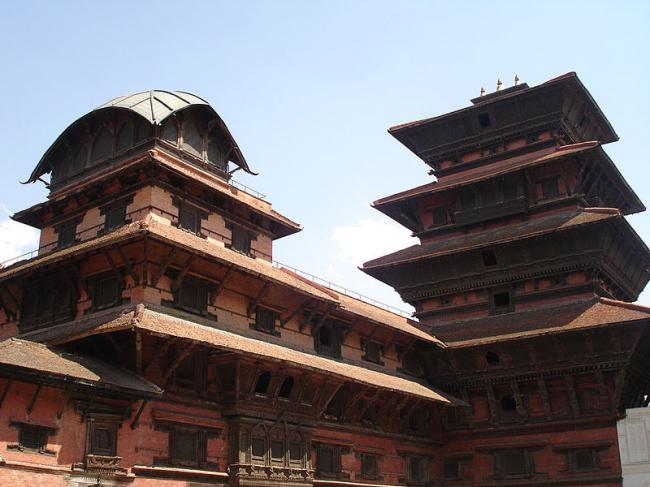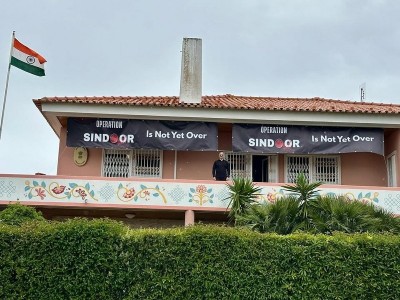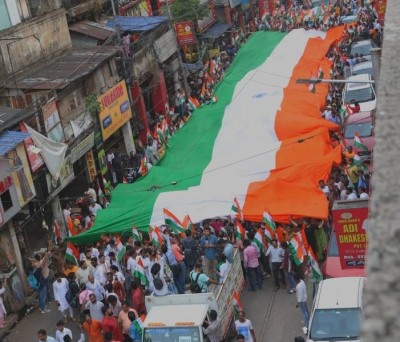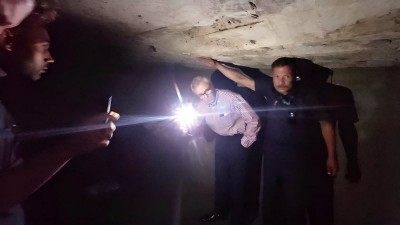
Enduring Vulnerabilities
The worst insurgency related incident, after November 21, 2006, had taken place on May 29, 2007, when nine persons, including a child, were killed as three bombs exploded in a house at Bhutuke village in the Gothadi Village Development Committee (VDC) area of Palpa District. According to partial data compiled by the South Asia Terrorism Portal (SATP), Nepal recorded nine major insurgency-related incidents (each involving three or more fatalities) after the CPA, the last of these was on April 30, 2012, when at least five people died and two dozen were injured in a bomb explosion at Ramanand Chowk in Dhanusa District. Though Nepal has recorded 298 insurgency-related fatalities, including 178 civilians, five Security Force (SF) personnel and 115 insurgents, since the CPA, the last of such fatalities occurred on August 24, 2012, when unidentified assailants had killed the general secretary of the Madhesi Janadhikar Forum (MJF)-affiliated Factory Workers Union (FWU), Rama Shankar Mandal, in the Birgunj area of Parsa District.
Though the insurgency has subsided, Nepal disturbingly continues to witness significant 'political violence'. According to the Global Terrorism Database, the number of fatalities due to political violence, between November 22, 2006, and December 31, 2014, stood at 48. According to SATP data, Nepal has already recorded 25 fatalities, including 17 policemen and eight civilians, due to political violence in 2015 (data till August 27, 2015). Of these, 24 were recorded in August alone.
According to a Nepal Police data, Nepal recorded a total of 1,047 strikes between April 2010 and April 2015. The number of strikes stood at 221 between April 2010-March 2011; 257 between April 2011-March 2012; 183 between April 2012-March 2013; 201 between April 2013-March 2014; and 185 between April 2014-March 2015. Though no further data for the current year is available, reports quoting Nepal Ministry of Home Affairs indicated that, on August 17, 2015, alone, more than 51 Districts across the country witnessed strikes, including transport halts, school and college closures and business and industrial shutdowns.
The recent round of violent protests which had engulfed the Himalayan nation commenced on July 9, 2015, when the four major parties - Nepali Congress (NC), Communist Party of Nepal-Unified Marxist Leninist (CPN-UML), UCPN-M, and Madhesi Janadhikar Forum-Loktantrik (MJF-L) - decided to collect public opinion on the provisions of the draft Constitution. Groups in opposition to the decision had threatened severe protests if the major political parties did not pay heed to their principal demand, the inclusion of provisions in the Draft Constitution for Nepal to be federated into 11 provinces as recommended by the State Restructuring Commission formed in 2011, and not into eight as agreed in the 16-point Agreementbetween the four principal parties.
The Government, however, not only completed the process of collecting public opinion on the provisions of the draft Constitution on July 27, 2015, but on August 8, 2015, decided to divide the country into six provinces, even less than the eight province model which had become the bone of contention. Though the names of the Provinces were not declared the boundaries were demarcated: Province 1 [Taplejung, Panchthar, Ilam, Sankhusabha, Terhathum, Dhankuta, Bhojpur, Khotang, Solukhumbu, Okhaldhunga, Udaypur, Jhapa, Morang and Sunsari], Province 2 [Saptari, Siraha, Dhanusha, Mahottari, Sarlahi, Rautahat, Bara and Parsa], Province 3 [Dolakha, Ramechhap, Sindhuli, Kavrepalanchowk, Sindhupalchowk, Rasuwa, Nuwakot, Dhading, Chitwan, Makwanpur, Bhaktapur, Lalitpur and Kathmandu], Province 4 [Gorkha, Lamjung, Tanahun, Kaski, Manang, Mustang, Parbat, Syangja, Myagdi, Baglung (eastern part) and Nawalparasi (east of Daunne)], Province 5 [Nawalparasi (west of Daunne), Rupandehi, Kapilvastu. Palpa, Arghkhanchi, Gulmi, Baglung (western part), Rukum (east of Rukumkot), Rolpa, Pyuthan, Dang, Banke and Bardiya], and Province 6 [Dolpa, Jumla, Mugu, Humla, Kalikot, Jajarkot, Dailekh, Surkhet, Bajura, Bajhang, Doti, Achham, Darchula, Baitadi, Dadeldhura, Kanchanpur,Salyan, Rukum (west of Rukumkot) and Kailali].
Unsurprisingly, violent protests intensified, and a day later, on August 10, 2015, two persons, identified as Tikaram Gautam and Yam Bahadur B.C., were killed and another 50 were injured as protests against the proposed provincial demarcations turned violent in Surkhet District. With pressure building, the Government revisited its decision on August 21, 2015, and decided to split the sixth province, which was the biggest in size in the earlier model, into two: Province 6 and Province 7. According to reports, Province 6 which earlier had 19 Districts, will now contain 10 Districts, while the remaining nine will go to Province 7. Province 6 will include Surkhet, Salyan, Dailekh, Jajarkot, Rukum (split), Kalikot, Jumla, Dolpa, Mugu and Humla; while Province 7 will include Kailali, Kanchanpur, Doti, Dadeldhura, Achham, Baitadi, Bajura, Bajhang and Darchula Districts. Reports also added that, though the boundary demarcation of the first five provinces that were agreed upon earlier more or less remained unchanged, the Thori VDC of Parsa District was brought under Province 3.
With this decision, the demand for a single province comprising of all mid-western Districts was addressed. However, the Tharu community, which was demanding a Tharuhat Autonomous Province, remained unsatisfied and consequently intensified their protest. Dhaniram Chaudhari, coordinator of the ongoing Tharuhat movement stated, "We are discussing new strategies to make our voice heard. Tharus are prepared to go to any extent to get their demands fulfilled."
Violence then intensified further, culminating in the August 24 incident at Kailali. Since then, most of Nepal, though primarily the Terai region, has seen violent protests. At the time of writing, much of the Terai remains under curfew. The Nepal Army (NA) has been deployed to bring the volatile situation under control.
These violent political protests, which are the product of the prevailing environment of acute political confrontations, are obstructing the finalization of the draft of the new constitution. A time bound agreement has long been sought, but in the absence of a consensus, the principal political formations had sought to push through the formula arrived at in the 16-point Agreement, which has been rejected by some of the smaller parties, and particularly by all Madhesi groups. The primary reason for their opposition was the apparent attempt by the four major parties to further delay final decision on the most contentious issue of federalism. The major demand of these parties, mainly the Madhes groups, was to carve out provinces based on ethnic identity. However, the 16-point agreement sought to put off the issue of federalism for some time, as Point 3 of the agreement read, "The Nepal Government will form a federal commission to recommend on demarcation of federal provinces. The commission will have a tenure of six months. The Legislature-Parliament will take a final decision on the demarcation with a two-thirds majority after the recommendation of the commission."
Nevertheless, on August 27, 2015, President Ram Baran Yadav told PM Sushil Koirala that a new Constitution should be framed without any further delay, but that the major parties should try to take all stakeholders on board in the process. According to President's Press Advisor Rajendra Dahal the President told the PM, "You have tried to win the confidence of all the stakeholders until now and you still need to try to do so till the final hours of the constitution making process."
Evidently, a Constitution that is as inclusive as possible is the desirable objective. The present formulations have a measure of arbitrariness, and need to be smoothed out in consultation with the Madhesi groups. As commentator Prashant Jha noted, the political leaders in Nepal should be advised "to resolve core outstanding issues and promulgate a constitution that all Nepalis can own". India's Prime Minister Narendra Modi, who was brought into the controversy, also advised Prime Minister Koirala to seek the fullest participation of all stakeholders, declaring, "Five to ten people cannot sit in a room and write the constitution. All parties and forces should sit together. There must be greater dialogue." Earlier, while addressing Nepal's Constituent Assembly (CA) on August 3, 2014, Modi had made a similar observation, reportedly advising CA members to write the Constitution based on consensus: "Let the Nepali Constitution be one in which all sections of Nepali society feel that it is a bouquet where one flower represents them and their aspirations."
But murky political allegations have muddied the waters further. On August 24, 2015, Bamdev Gautam, Deputy Prime Minister and Home Minister of Nepal, referring to the sequence of events leading to violence on that day, alleged in Parliament that "he had heard that a large number of intruders from the south" had entered Gaur in Rautahat District. He was obviously referring to India, as Nepal shares its Southern borders with the country.
While the imperatives of a consensual process cannot be overemphasised, no party or political cabal can secure a veto on the entire process by resorting to violence. While a show of strength and determination will be necessary on the part of the Government, the space for political accommodation will also have to be fully explored.
Support Our Journalism
We cannot do without you.. your contribution supports unbiased journalism
IBNS is not driven by any ism- not wokeism, not racism, not skewed secularism, not hyper right-wing or left liberal ideals, nor by any hardline religious beliefs or hyper nationalism. We want to serve you good old objective news, as they are. We do not judge or preach. We let people decide for themselves. We only try to present factual and well-sourced news.







